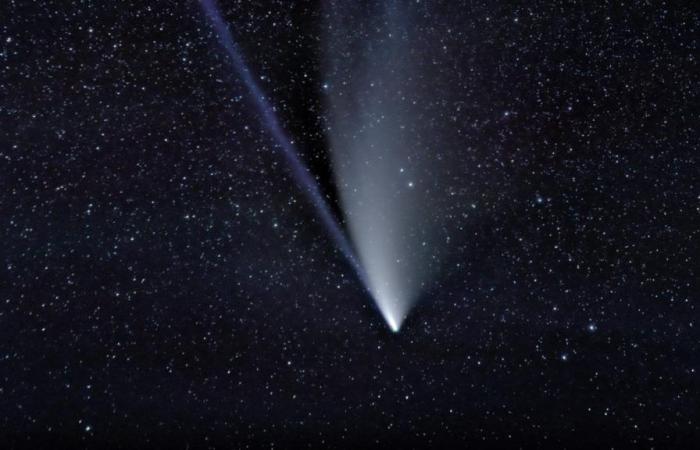Lhe comet C/2023 A3 Tsuchinshan-Atlas will be visible in the sky of the northern hemisphere between October 11 and 12. The brightest comet to cross the European sky in the last 13 years, it should most likely be observable with the naked eye or binoculars.
Currently invisible due to its proximity to the sun, the space object will approach Earth to within approximately 71 million kilometers on October 12. Before that, Tsuchinshan-Atlas will pass between the sun and the Earth, which will have the effect of multiplying its apparent brightness and making it more easily visible at the end of the week. The comet will appear in the west at dusk.
C/2023 A3 Tsuchinshan-Atlas is a non-periodic comet, as indicated by the letter C in its name. This means that it orbits the sun for periods ranging from 200 to thousands of years. The code 2023 A3 indicates the year and period of its observation (A3 corresponds to the first half of January). Finally, Tsuchinshan-Atlas are the names of the two observatories whose telescopes spotted the space object for the first time.
From the end of October, the comet will move away from Earth towards the edge of the solar system for the next 20 years. It will not return near our planet for 26,000 years.






